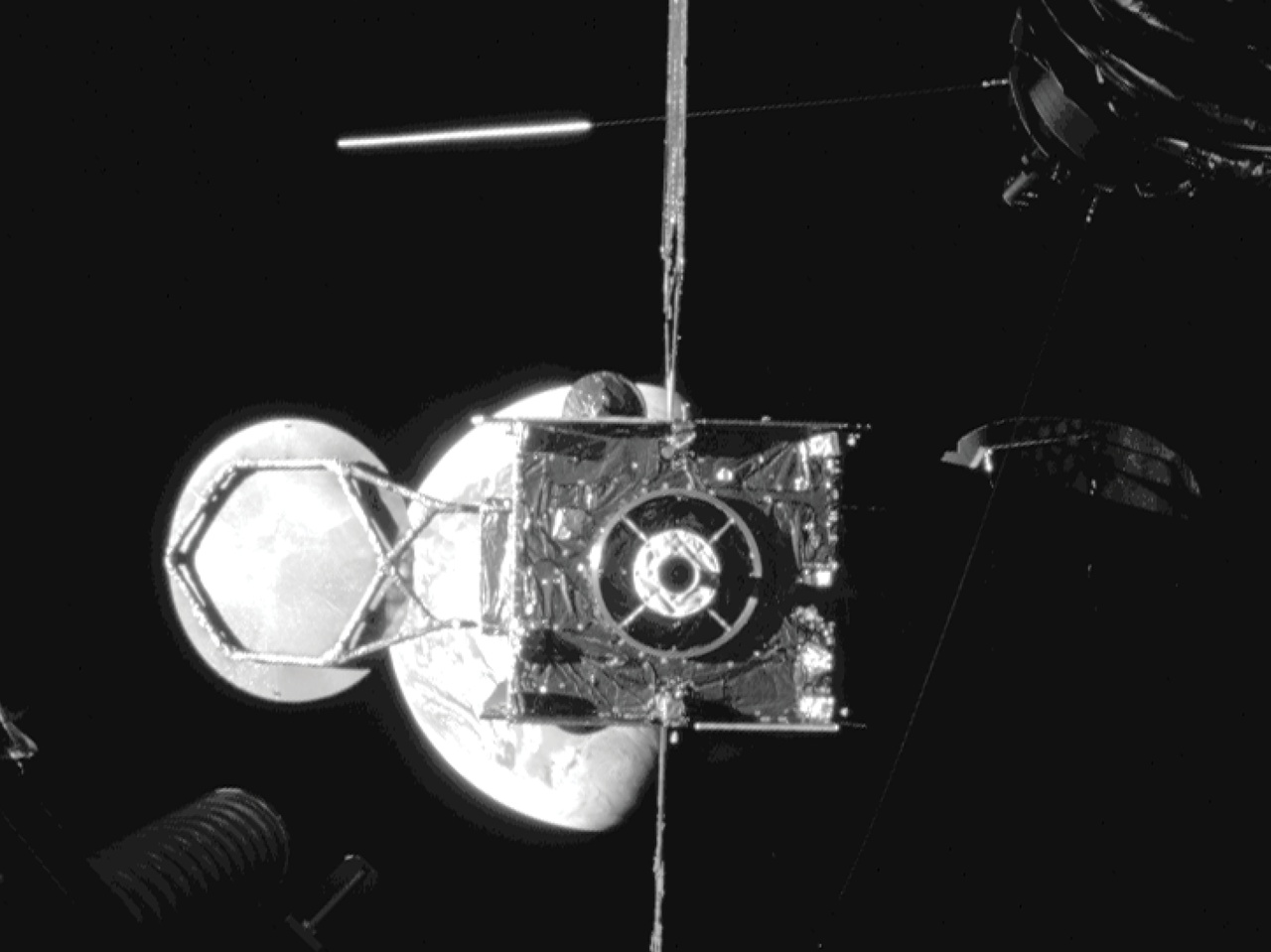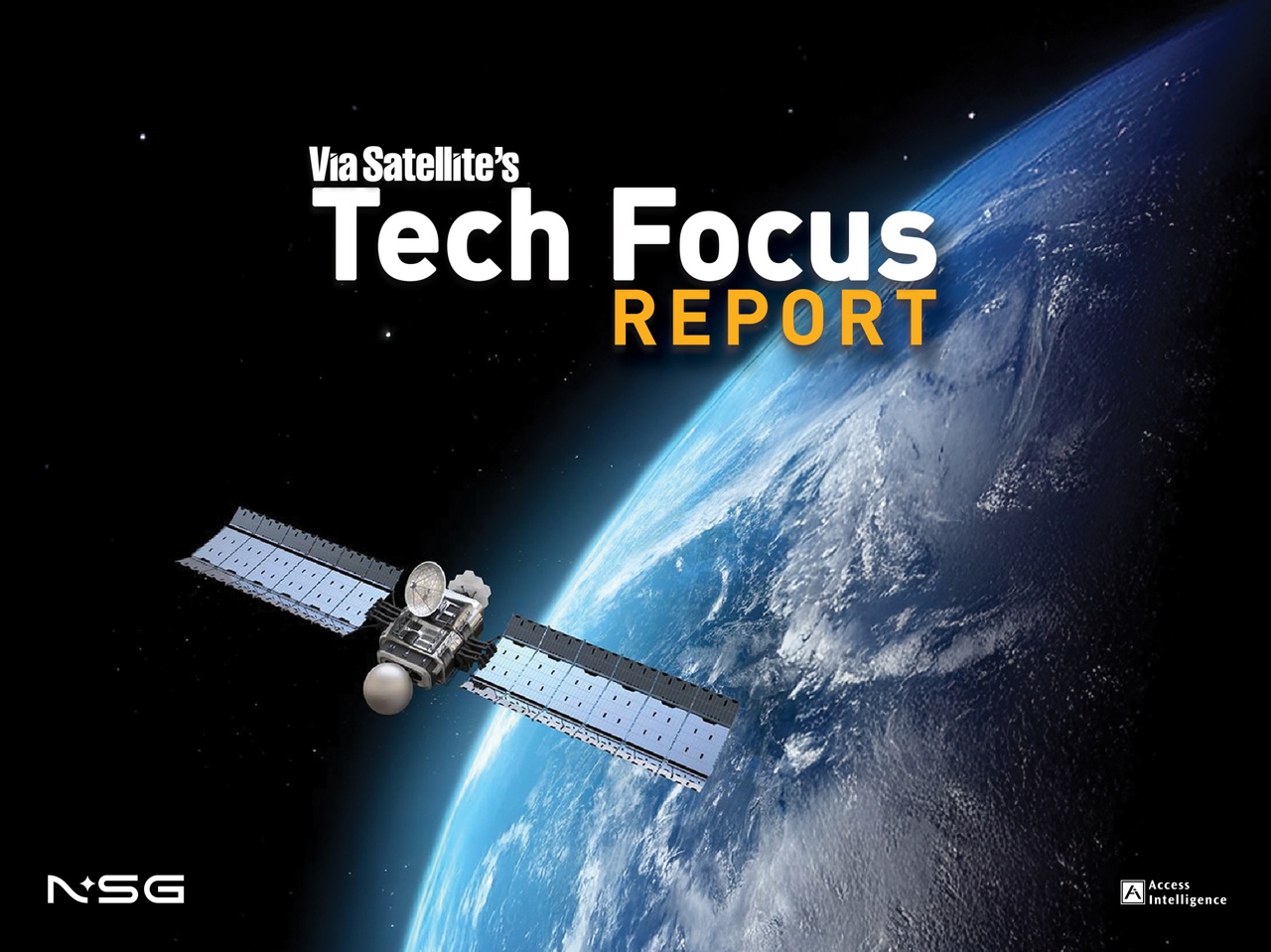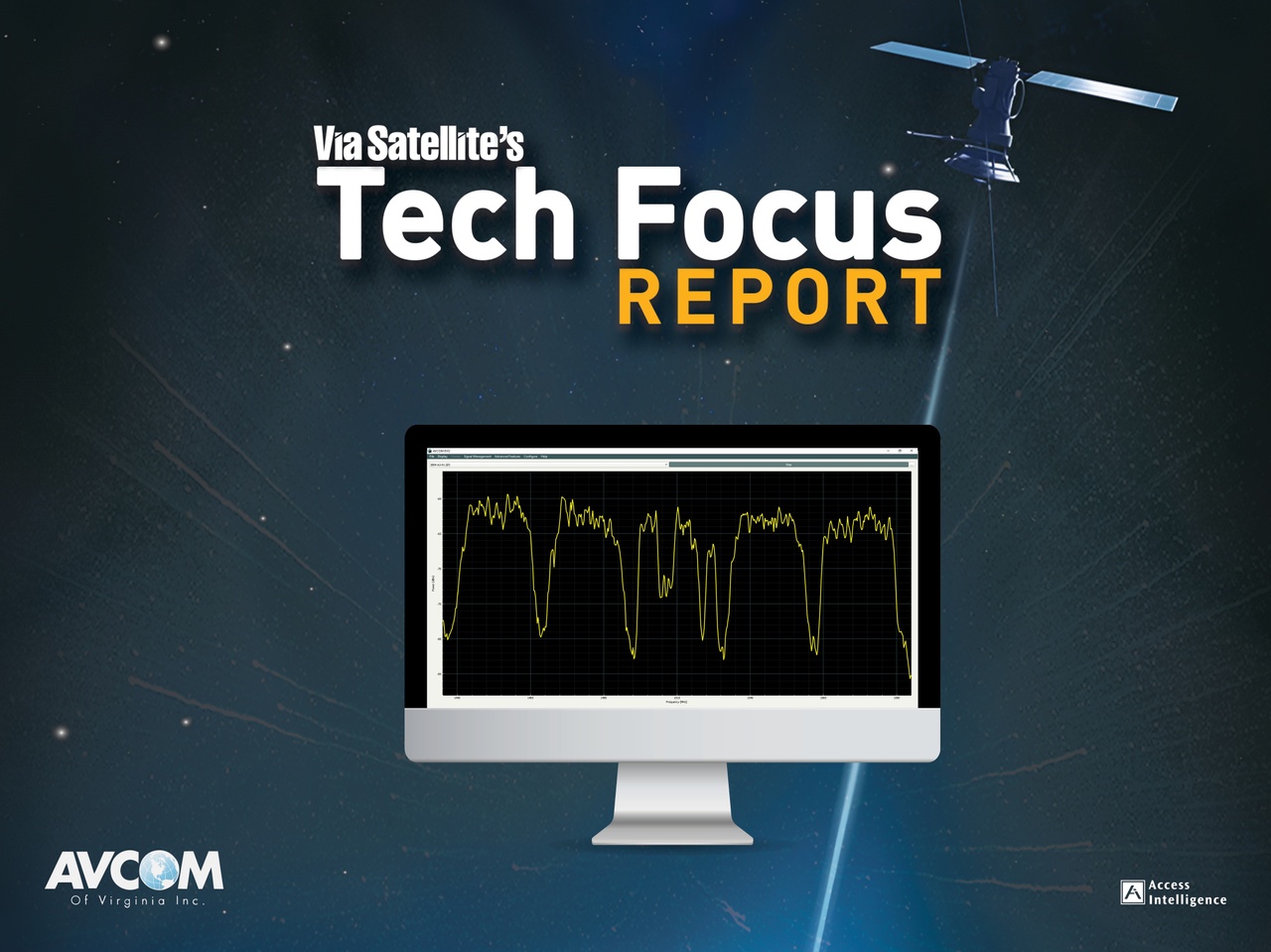
How GEO is Evolving to Secure its Place in the Multi-Orbit Puzzle
The once-stable market for GEO has been disrupted. A new market is emerging, characterized by modularity, maneuverability, small form factors and multi-orbit offerings.August 25th, 2025A satellite in Geostationary Orbit (GEO) is the picture of stability. It seems to hover motionless above the same spot on Earth, broadcasting to the same region year after year. But the market for GEO is moving fast.
What was once a stable business model built on 15 to 20-year investments, reliable revenues and minimal competition has largely been disrupted. Low-Earth Orbit (LEO) constellations, led by Starlink, have changed the satellite broadband market and shifted user expectations around cost, performance, and coverage. At the same time, broadcast revenues continue to decline, further challenging traditional GEO business models.
There is no doubt that GEO has a future. The orbit is far too valuable to be replaced. The real question is whether modularity, maneuverability, small form factors, and multi-orbit offerings can unlock the value of the orbit and revive a market that has been on the decline for the better part of a decade.
“All this funnels into the word flexibility,” said Dallas Kasaboski, principal analyst at Analysys Mason. “Everywhere the market is looking for increased flexibility, whether that’s flexibility in the satellite itself, flexibility of the mission, flexibility of the network, or flexibility of procurement.”
A Challenging Market
New orders for GEO satellites have been trending down since the mid-2010s — except for a brief buying spree in 2020 to allow operators to clear the C-band. There were only eight new GEO orders in 2024, marking a near-30-year low, according to Analysys Mason. So far, six contracts for new GEOs have been signed this year. These include Sky Perfect JSAT’s recent purchase from Thales Alenia Space, another Thales order from Space Norway, an EchoStar order from Maxar Space Systems, and two orders for small GEOs from Swissto12 and Astranis, respectively.
The drop in sales coincided with a decline in live and on-demand video broadcast in favor of streaming and terrestrial fiber. Meanwhile, Starlink now commands roughly two-thirds of the consumer satellite broadband market. In competitive verticals, like maritime, Novaspace expects Starlink and other Non-Geosynchronous orbit (NGSO) constellations will soon dominate, serving up to 91 percent of connected ships in the next decade.
“What we’re seeing in non-GEO right now is such a proliferation of competition, of bandwidth, of supply that’s it really just bulldozing the market,” Kasaboski noted. “It would be one thing if you had several hundred competitors. It would also be one thing if you had one competitor who was incredibly aggressive. But the problem is, you have both.”
Traditional GEO players saw the writing on the wall, and they have not stood still. Increasingly, new GEOs feature flexible, software-defined payloads and dynamic beamforming. Operators are increasingly offering managed networks and multi-orbit services. And manufacturers are opening new markets for small, low-cost GEOs weighing less than 1,000 kilograms.
“GEO is evolving,” said Christian Keil, vice president of External Relations at Astranis, the U.S.-based operator and manufacturer of small GEOs. “But clearly, the business models for making the most of that orbit need to change.”
Small and Modular
The smallsat revolution ushered in a set of common standards for satellites in LEO, most notably cubesats. Having standardized buses and mechanical interfaces helped build a marketplace for modular components and subsystems, so missions could be integrated more quickly, allowing for shorter development cycles and rapid iteration. Today, the lessons from LEO are slowly trickling into GEO.
“What’s going to be important for GEO going forward is modularity,” said Juan Deaton, chief alignment officer at Alignment Consulting and Engineering.
Among GEO players, there has been a move away from monolithic, custom-built platforms toward modular spacecraft, onboard processing units, electrical interfaces, subsystem decks and chipsets. Modularity allows components to essentially “piece together like Legos,” Deaton emphasized. It also creates opportunities for a broader market of subsystems and modules, like what’s available in the smallsat market.
“For companies that want to be competitive, they have to be able to say, ‘Look at all of these components that can integrate with me,’” Deaton explained. “To have an ecosystem thrive, those types of partnerships will need to happen.”
Small GEOs were largely born out of the smallsat revolution. Advancements in 3D printing, software-defined radios, solid-state power amplifiers and standardized bus and payload modules made it possible to shrink the size and weight of a Geostationary satellite from several tons to the size of a washing machine. Small GEOs also promise reduced costs and accelerated development cycles.
“Modularity is very important,” said Steve Collar, chairman of the board at Swissto12. “Standardization wherever you can be standard is critical, and so is not changing things that don't need to be changed.”
The GEO smallsat manufacturer Swissto12 is one of Europe’s fastest-growing satellite manufacturers with Intelsat (now SES) and Inmarsat (now Viasat) among its customers. It embraced modularity in its standardized buses as well as 3D-printed RF payload modules. 3D printing cuts the cost of redesigning custom payloads while producing a single, highly integrated RF module that simplifies the payload architecture and has been shown to improve RF performance.
“The good news is disruption tends to drive innovation,” said Collar, who saw gaps emerging in the traditional GEO market from his time as CEO of SES. “You need innovation to be responsive to the disruption in the market.”
GEO smallsats have created opportunities for highly targeted geographic coverage and gap-filling missions for customers that would otherwise be unable to gain market access. Today, the small GEO space is increasingly competitive with a growing number of companies vying for market share, including Swissto12, Astranis, Apex, AscendArc, and Saturn Satellite Networks.
Astranis recently hit a milestone with two MicroGEO satellites entering service for in-flight connectivity provider Anuvu, with another satellite for the Philippines in orbit-raising earlier this month.
The Value of Maneuverable GEO
In 2024, the U.S. Department of Defense began formally investigating uses for the new class of sub-1,000 kilogram GEOs. Companies like Swissto12 and Astranis were proving the commercial viability of small GEO and the Space Force needed resilient and responsive space — platforms that could be rapidly designed, built, launched and operated to perform critical missions.
Beyond a smaller form factor, Space Force was looking for mobility, specifically, maneuverable Geosynchronous Orbit (M-GEO) commercial satellite-based services. GEO uniquely supports maneuverability and the service saw advantages in being able to maneuver into or between orbital slots, whether to support existing capabilities or replace lost ones. The interest also coincided with China and Russia increasing the cadence of threatening orbital maneuvers in GEO.
At Milsatcom USA this spring, Jared Reece, head of the COMSATCOM solutions office at Space Systems Command (SSC), announced that a solicitation for competitive bids would be released in October for M-GEO satellite services with an estimated program value of up to $905 million.
The case for M-GEO is similar to proliferated LEO architectures. “We’re really trying to get after an emerging capability here. This is something that’s really innovative and I think something that can provide a lot of resource to the DoD in the right situations,” Reece said. He later told Via Satellite the idea is to “have something we can do quickly, in an area where there’s conflict, where we don’t have a lot of bandwidth and we need to surge.”
Currently, demand for maneuverability — beyond station keeping and orbital transfer — is concentrated on the defense side. But there are potential applications for commercial markets, particularly with improvements in propulsion.
“Mobility in GEO is a new concept, and a big unlock,” said Keil, noting Astranis has equipped all of its satellites with high-efficiency, dual-propulsion chemical and electric ion thrusters. These propulsion systems allow the satellite to reach its assigned orbital slot and adapt its mission if demand changes.
“We like to say that ‘GEO is stationary no more,’” Kiel added. “The modern world moves too fast to lock yourself into one plan for 15 or 20 years — you want to be able to provide connectivity ‘here’ to match demand today, then ‘there’ once conditions on the ground change.”
Multi-Orbit Mergers
Since Starlink took the satcom market by storm, there has been a growing tendency to pit LEO against GEO in a battle of the orbits. In this narrative, LEO has an edge in low-latency, global coverage, small, low-power terminals and generally higher bandwidth per user. Where GEO wins out is in spectral efficiency, reliability, longer lifespans, high-throughput applications and one-to-many data delivery, like broadcast and multicast.
Like many in the industry, Viasat CEO Mark Dankberg rejects the “religious wars” of GEO vs. LEO. “Each orbit has certain advantages and disadvantages—there is no ‘best’ orbit,” he said. “Bottom line, people need bandwidth when and where they use it – and for how they use it.”
Increased competition from NGSO constellations has driven a wave of consolidation across traditional operator in recent years with Viasat/Inmarsat, Eutelsat/OneWeb, and SES/Intelsat bringing multi-orbit capabilities together through strategic mergers. They also marked a shift away from the traditional approach of selling a data pipeline from GEO into managed services and network management among assets in different orbits.
Viasat has brought several multi-orbit offerings to market in recent months. It combined GEO, LEO and terrestrial LTE service for its maritime-focused NexusWave. For in-flight connectivity, Viasat Amara is designed to use dual-beam connections across GEO, LEO and Highly Elliptical Orbit (HEO). Viasat is also developing a shared, multi-orbit 5G non-terrestrial network (NTN) with Space42 for standards-based direct-to-device (D2D) communications and next-generation mobile satellite services.
“Users want reliable, cost-effective and resilient connectivity, which is best supported by multi-orbit, multi-band and multi-network integration,” Dankberg said. “Our intention – like others across the industry – is to provide the best possible service to users by creating hybrid, multi-orbit services that simultaneously blend the advantages and mitigate the weaknesses of different orbits.”
However, with operators combining orbits and networks to create value-added services, there are still questions about how it will benefit the GEO market. “Even if those relationships are moving forward, I don’t feel like it’s benefiting GEO [in terms of bolstering GEO sales],” said Kasaboski. “The best success story for multi-orbit might be either on the ground, in terms of antennas, or in the virtual space, such as managed networks and cloud services.”
Even in the recent multi-orbit merger of SES and Intelsat, future investment is largely focused around Medium-Earth Orbit. While the combined company has a fleet of around 90 GEO satellites, CEO Adel Al-Saleh recently told Via Satellite that “the bulk of the new investments is going to focus on expanding our MEO capabilities.”
In a call with investors last month, Al-Saleh noted that in terms of government demand, “Over time, GEO is declining and moving towards MEO and LEO.” He added, however, that government demand for GEO capabilities has grown recently, and governments’ use of GEO will continue into the foreseeable future.
“Due to the recent geopolitical shifts, we’re starting to see increased demand as governments identified the need for more sovereign, secure connectivity,” he said. “Usage of GEO continues to be very robust in the government sector on both sides of the Atlantic.”
Sovereign Satcom
According to the recently released Space Report 2025 Q2 edition, governments around the world invested $132 billion in space in 2024, growth of 5.6 percent over the previous year, driven largely by U.S. defense spending.
Despite a growing trend among nations to buy or lease satcom capacity, the case for sovereign assets in GEO remains. In a contested, unstable geopolitical environment, nations are prioritizing sovereign control over critical communications, a goal that is more readily achieved from GEO than other orbits.
“Often these countries consider ownership and control of their space systems as fundamental for national sovereignty and security and are rightfully concerned about ‘outsourcing’ to a third party that may not support them in times of need,” said Dankberg. “LEO satellite networks are inherently global, making them less suited to meet sovereign national and regional needs.”
The conflict in Ukraine has highlighted the risks of relying exclusively on third parties or a single network for critical communications. While Starlink and its founder, Elon Musk, have denied allegations of disrupting wartime connectivity, a recent outage and ongoing geopolitical tensions have prompted nations to reconsider satcom network diversity.
The recent joint investment in GovSat-2 by SES and the Luxembourg government illustrates the demand for secure, reliable GEO connectivity for sovereign satcom, particularly in Europe. The new investment will follow the public-private partnership model of GovSat-1 to provide regional connectivity for the Luxembourg Directorate of Defence, EU, and NATO nations.
As more governments come to understand their reliance on space and the need to have their own capabilities, GEO will tend to emerge as the best option, said Collar.
“I think if we look ahead into the next decade, a significant portion of the orders for Geostationary satellites going forward will be sovereign assets for governments looking to underscore their national sovereignty,” he said. VS
Leandra Bernstein is a freelance space writer and content strategist based in Washington, D.C.









